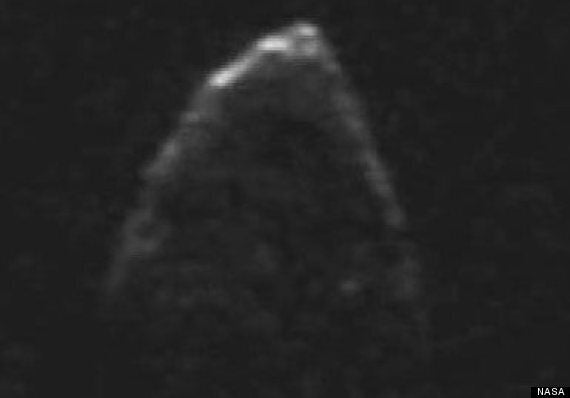An asteroid which is spinning at an "impossible" rate could be on a collision course with Earth.
The asteroid - 1950 DA - is about 1,000 metres in diameter, but rotates once every 2 hours and six minutes.
At that rate, astronomers say, the ball of rock and dust should totally disintegrate -- but for some reason it's managing to hold itself together.

And that might be a problem for us, since latest estimates suggest there is a small but significant chance it could be on a collision course with the planet Earth. Fortunately, the rock won't hit us until 2880, if it ever does, but that's still a worry given our total inability to do anything about it, or similar rocks, except pray for salvation. (And yes, that's NASA's official advice).
So why is the asteroid hanging together?
A new report from the University of Tennessee suggests that it can't just be gravity.
"We found that 1950 DA is rotating faster than the breakup limit for its density," said postdoctoral researcher Ben Rozitis in the study, published in Nature.
"So if just gravity were holding this rubble pile together, as is generally assumed, it would fly apart. Therefore, interparticle cohesive forces must be holding it together."
What are "interparticle cohesive forces"? Also known as Van Der Waals forces, they are a grab-bag of attractive and repulsive effects between molecules that are neither electrostatic or covalent bonds.
Instead they are a mix of quantum effects and dipole-dipole interaction, which is a science-y way of saying it's kind of like how lizards manage to walk up walls.
The good news is that this means a very small impact could shatter the asteroid -- giving our descendants a decent chance at blowing it out of the sky.
"With such tenuous cohesive forces holding one of these asteroids together, a very small impulse may result in a complete disruption," said Rozitis.
And while the asteroid isn't going to hit us for a while, the team is adamant that the danger from other rocks is real -- and this research could help us defeat them:
“Following the February 2013 asteroid impact in Chelyabinsk, Russia, there is renewed interest in figuring out how to deal with the potential hazard of an asteroid impact,” said Rozitis. “Understanding what holds these asteroids together can inform strategies to guard against future impacts.”